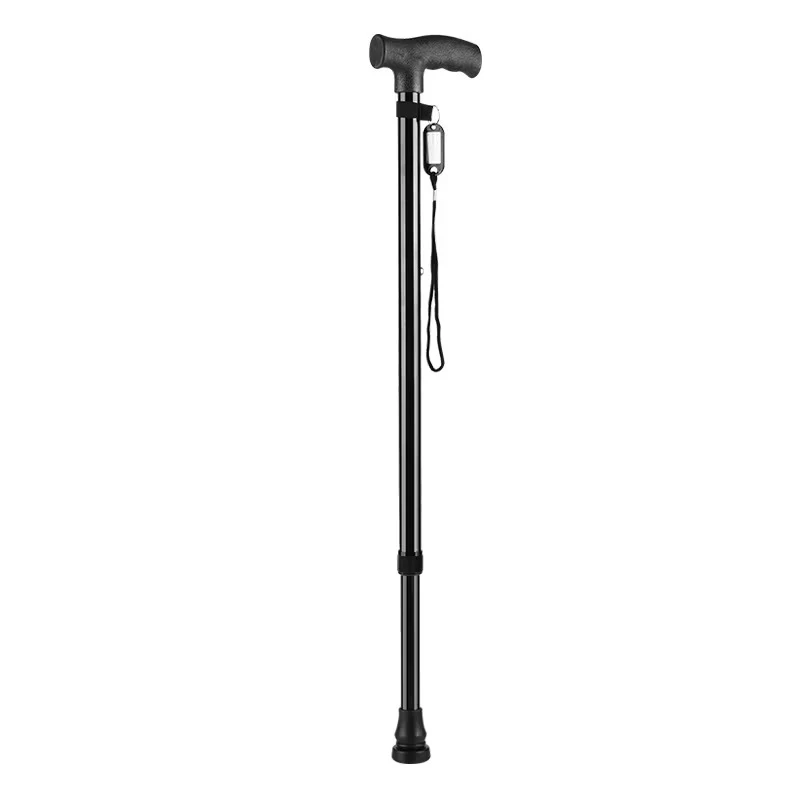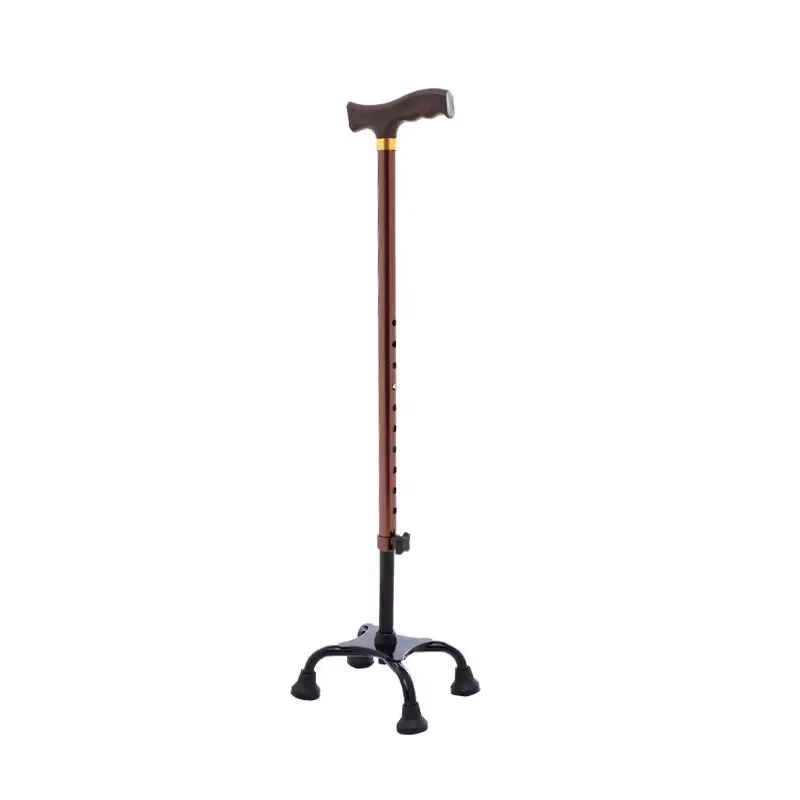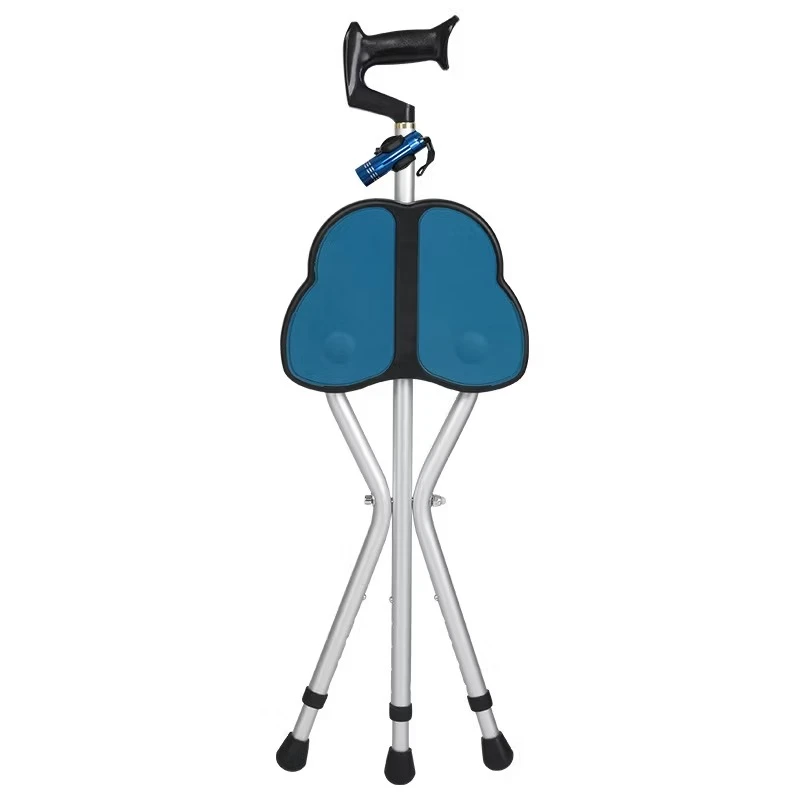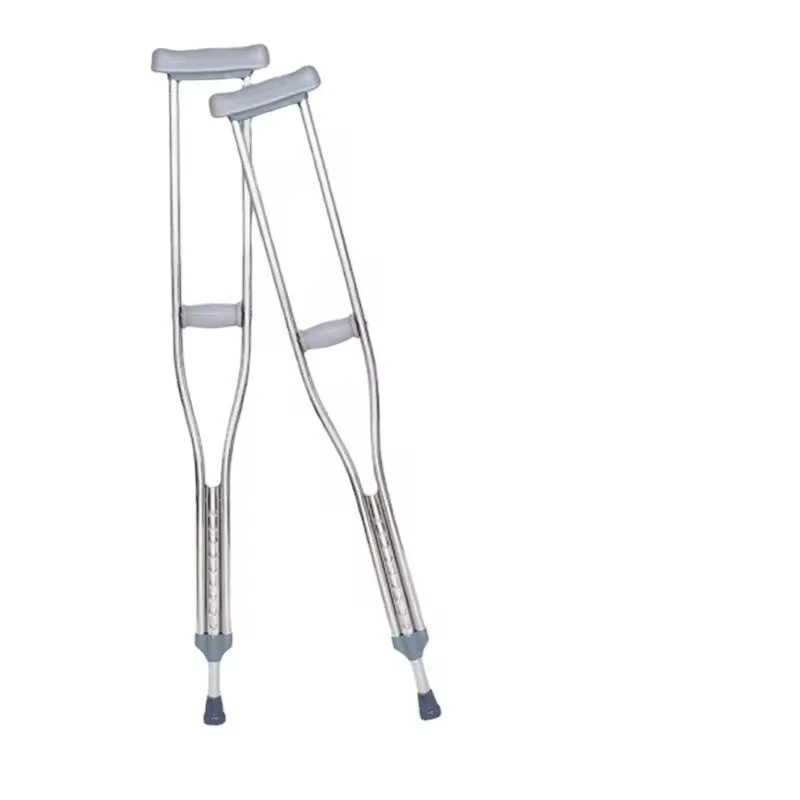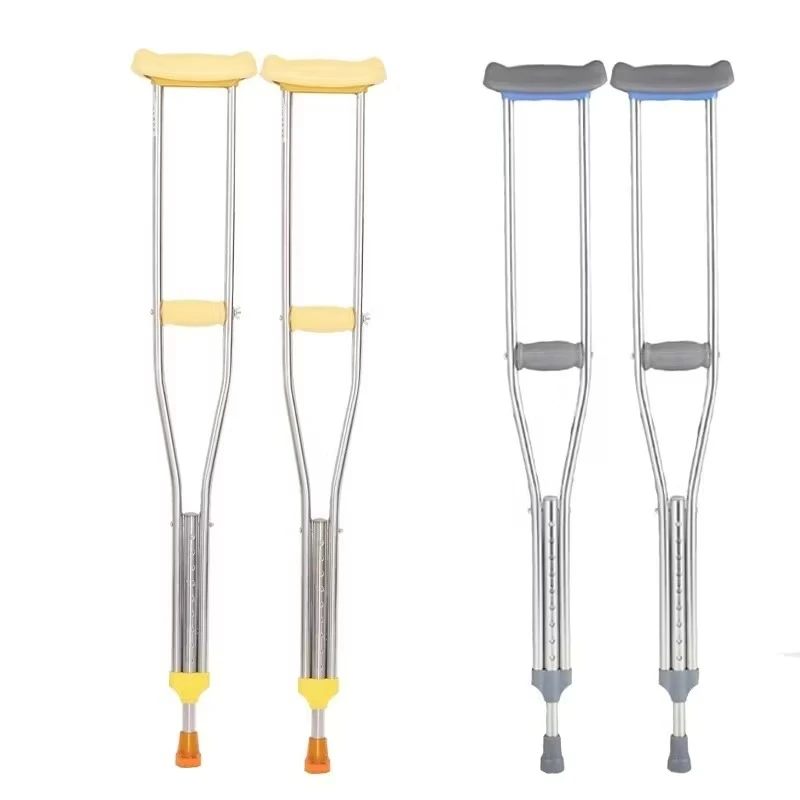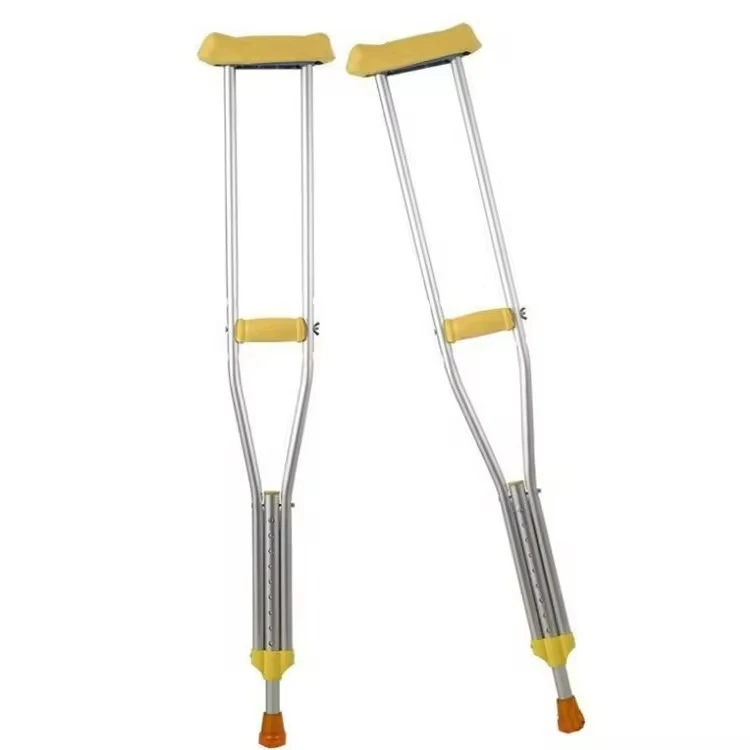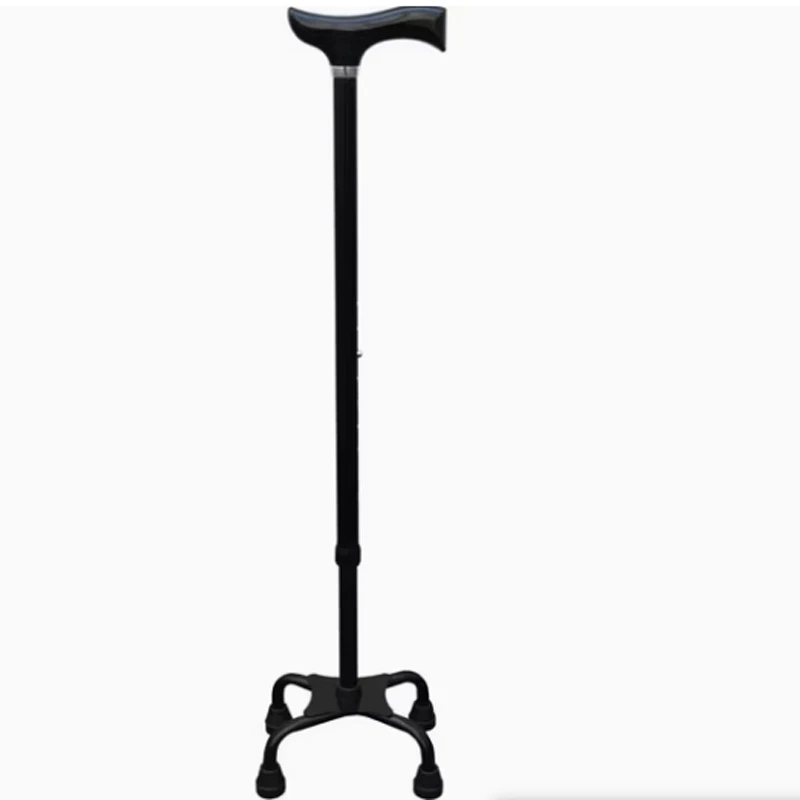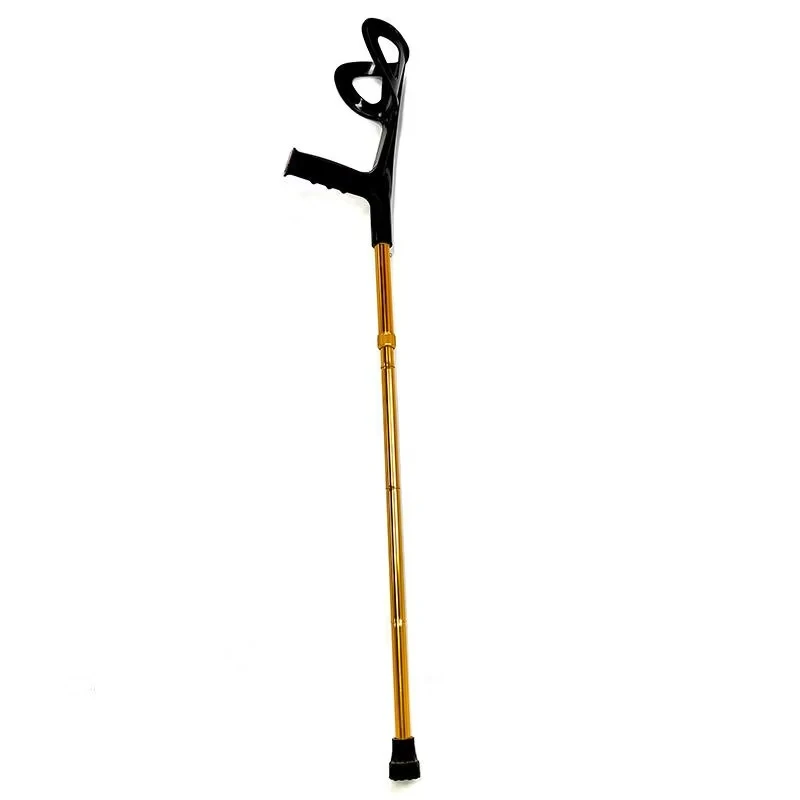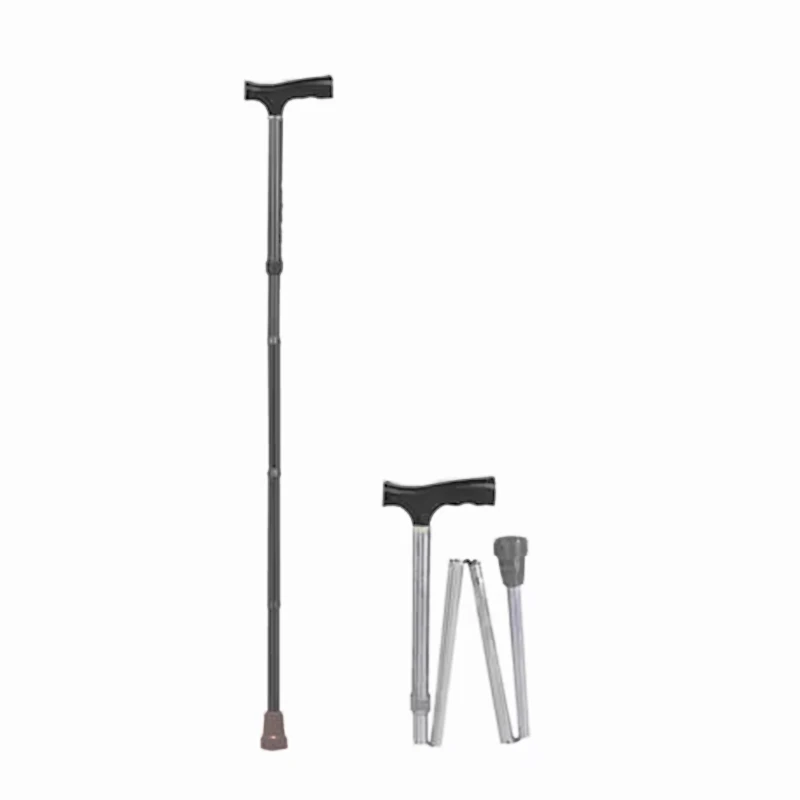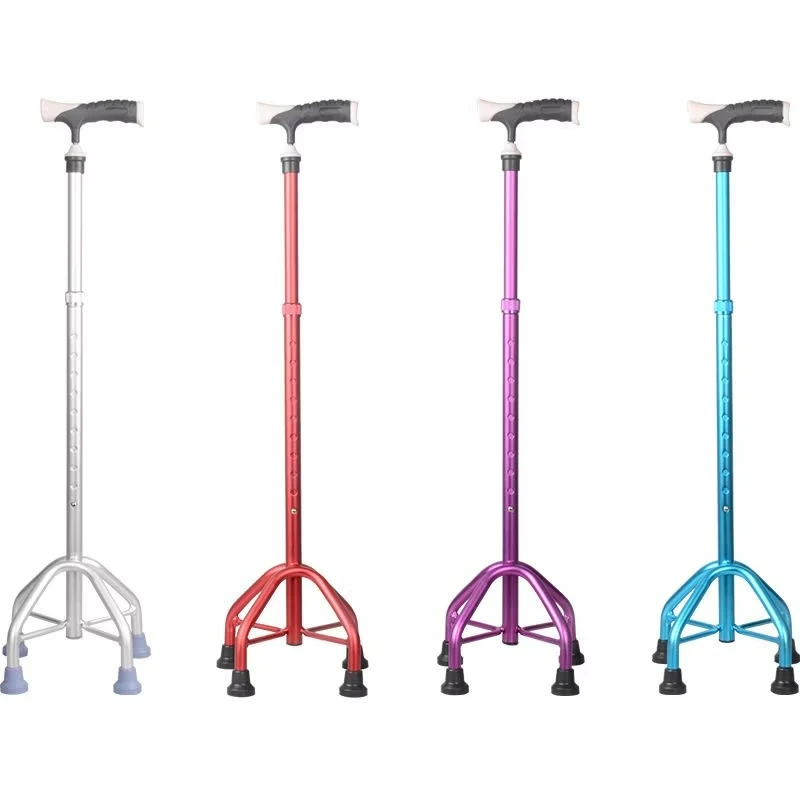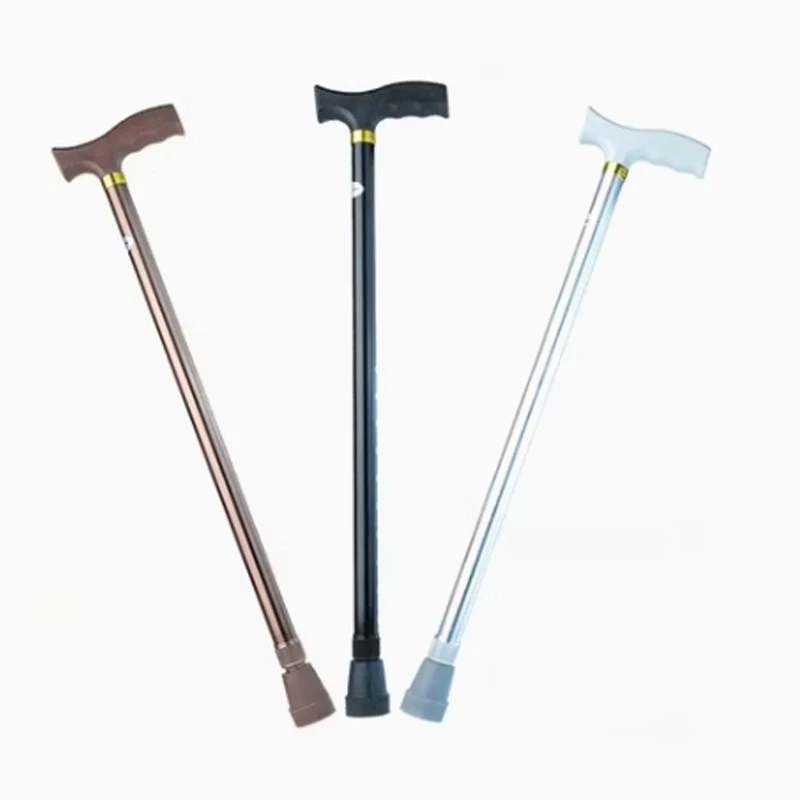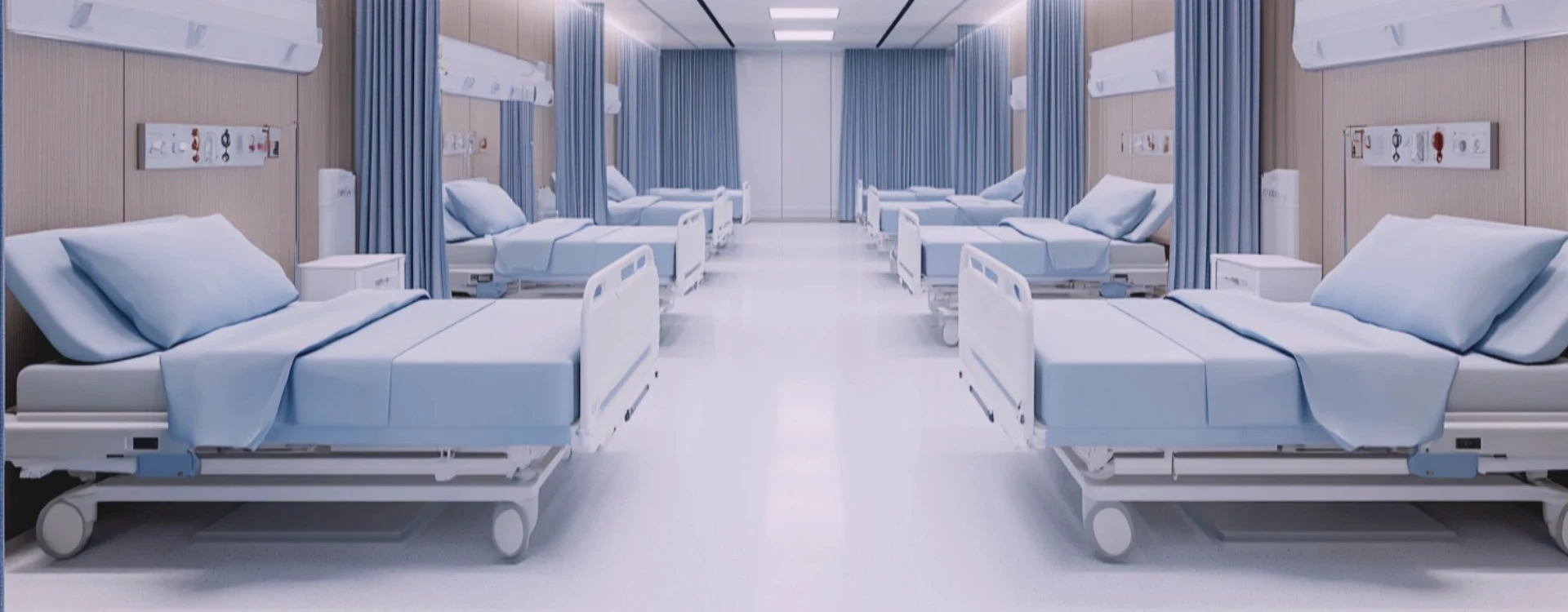
Crutches are mobility aids designed to assist individuals with temporary or permanent lower-limb disabilities by providing support and stability while walking. Key features of crutches include adjustable height settings, ensuring a proper fit for users of different heights and body types. This adjustability is essential to ensure proper posture and to avoid discomfort or strain on the underarms and wrists. Crutches are typically made from lightweight materials such as aluminum or carbon fiber, offering both durability and ease of use. The underarm pads or hand grips are often padded for comfort and to reduce the risk of pressure sores or blisters during prolonged use. The crutch tips are designed to provide traction, helping users maintain stability on different surfaces, while some models feature shock-absorbing tips that reduce impact on the arms and wrists. There are various types of crutches, such as axillary crutches, which fit under the arms and are commonly used for short-term rehabilitation, and forearm crutches, which offer more support for long-term use and distribute weight across the forearm, reducing strain on the wrists. The design of crutches has evolved over time, with newer models offering ergonomic grips and more advanced materials for added comfort and durability. Proper fit and function are crucial for maximizing the effectiveness of crutches, ensuring both safety and comfort for users.
How Do Crutches Benefit Users and Healthcare Providers?
Crutches play a vital role in enhancing mobility and independence for individuals with temporary or permanent lower-limb impairments. For users, crutches provide support and stability, enabling them to move around without putting weight on their injured or weakened legs. This mobility aid allows users to maintain their independence, perform daily tasks, and participate in activities that would otherwise be difficult or impossible. Crutches also help users recover from injuries by allowing them to bear partial weight on the affected leg while avoiding full pressure, which accelerates healing. The ergonomic design of modern crutches reduces the strain on the user’s arms, wrists, and underarms, making them more comfortable and easier to use for extended periods. For healthcare providers, crutches are essential in rehabilitation settings, as they allow patients to safely transition from bedridden states to partial weight-bearing mobility. They also help providers monitor the patient’s recovery progress, as crutches are often used in conjunction with physical therapy exercises to restore strength and balance. Crutches are particularly beneficial in a clinical setting, where patients need a mobility aid that is lightweight, adjustable, and easy to use for short-term recovery. Furthermore, the availability of different crutch types ensures that healthcare providers can tailor mobility aids to individual patient needs, enhancing the overall effectiveness of the rehabilitation process.
How To Choose The Right Crutch For A Patient or Healthcare Facility?
Choosing the right crutch for a patient or healthcare facility involves evaluating the patient’s needs, comfort, and specific condition. Start by considering the type of crutch: axillary crutches, which are placed under the armpits, are ideal for short-term use after surgery or injury, while forearm crutches offer more support and are better suited for long-term use, as they distribute weight across the forearms, reducing strain on the wrists. Next, ensure that the crutch is adjustable to accommodate the patient’s height. Proper fit is crucial to avoid discomfort and prevent injury—incorrectly sized crutches can cause muscle strain, poor posture, or additional injuries. The material of the crutches is another consideration; lightweight materials like aluminum or carbon fiber offer ease of movement and portability, while stronger materials may be needed for patients who require more stability or heavier weight-bearing. Comfort features, such as padded underarm supports and ergonomic hand grips, are essential for reducing pressure and providing a more comfortable experience for the user, especially during long periods of use. Additionally, check the crutch tips to ensure they provide sufficient traction and stability on various surfaces to prevent slipping. For healthcare facilities, it’s important to select crutches that are durable, easy to maintain, and suitable for different patients’ needs, ensuring that they are both functional and safe for use.



 PDF
PDF